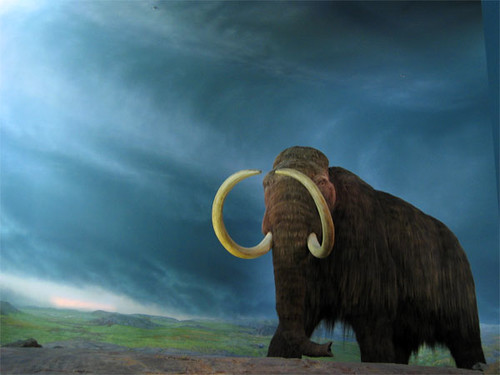A Colossal Tale of Extinction and Resurrection
The woolly mammoth (Mammuthus primigenius) is perhaps one of the most iconic symbols of the Ice Age, known for its massive size, shaggy coat, and impressive tusks. These majestic creatures once roamed the frozen tundra of North America, Europe, Asia, and some Arctic islands, but their extinction at the end of the Pleistocene Epoch remains a subject of fascination and scientific inquiry. Furthermore, recent advancements in genetic technology have raised the tantalizing possibility of bringing these prehistoric giants back to life through de-extinction efforts.
Woolly mammoths were members of the elephant family (Elephantidae) and were well adapted to the harsh conditions of the Ice Age. They possessed long, curved tusks that could reach lengths of up to 4 meters (13 feet), which were likely used for defense, mating displays, and digging through snow and ice to access vegetation. Their thick, woolly coats provided insulation against the cold, and their large size allowed them to browse on a variety of grasses, herbs, and shrubs.
The exact reasons for the extinction of the woolly mammoth are still debated among scientists, but several factors likely played a role. Climate change, habitat loss, overhunting by early humans, and possibly disease are all thought to have contributed to their demise. As the Earth’s climate warmed at the end of the last Ice Age, the mammoths’ preferred habitats of grassy tundra and steppe gave way to forests and shrublands, reducing the availability of suitable food and habitat.
The woolly mammoth persisted on isolated islands in the Arctic Ocean, such as Wrangel Island in Russia and St. Paul Island in Alaska, for several thousand years after their mainland counterparts had disappeared. The last known population of woolly mammoths survived on Wrangel Island until around 4,000 years ago, making them some of the most recent megafauna to go extinct.
In recent years, advances in genetic technology, such as CRISPR-Cas9 gene editing, have led to renewed interest in the possibility of bringing back extinct species, including the woolly mammoth. Scientists have successfully sequenced the woolly mammoth genome using DNA extracted from well-preserved specimens found in the permafrost of Siberia. Using this genetic information, researchers hope to introduce mammoth-like traits, such as cold tolerance and shaggy coats, into the genome of their closest living relatives, Asian elephants, to create a “mammoth-like” elephant hybrid.
While the idea of resurrecting the woolly mammoth is undoubtedly captivating, it also raises ethical and practical concerns. Critics argue that de-extinction efforts divert resources away from conserving living species and restoring habitats that are currently under threat. Additionally, reintroducing mammoth-like elephants into modern ecosystems could have unforeseen ecological consequences and may not truly recreate the lost ecosystems of the Pleistocene.
The story of the woolly mammoth’s extinction serves as a cautionary tale about the vulnerability of even the most formidable species in the face of environmental change and human activity. While the possibility of bringing back these ancient giants through de-extinction efforts is tantalizing, it also raises complex ethical and practical questions that must be carefully considered. Whether or not woolly mammoths once again roam the Earth, their legacy as symbols of the Ice Age will continue to captivate the human imagination for generations to come.

